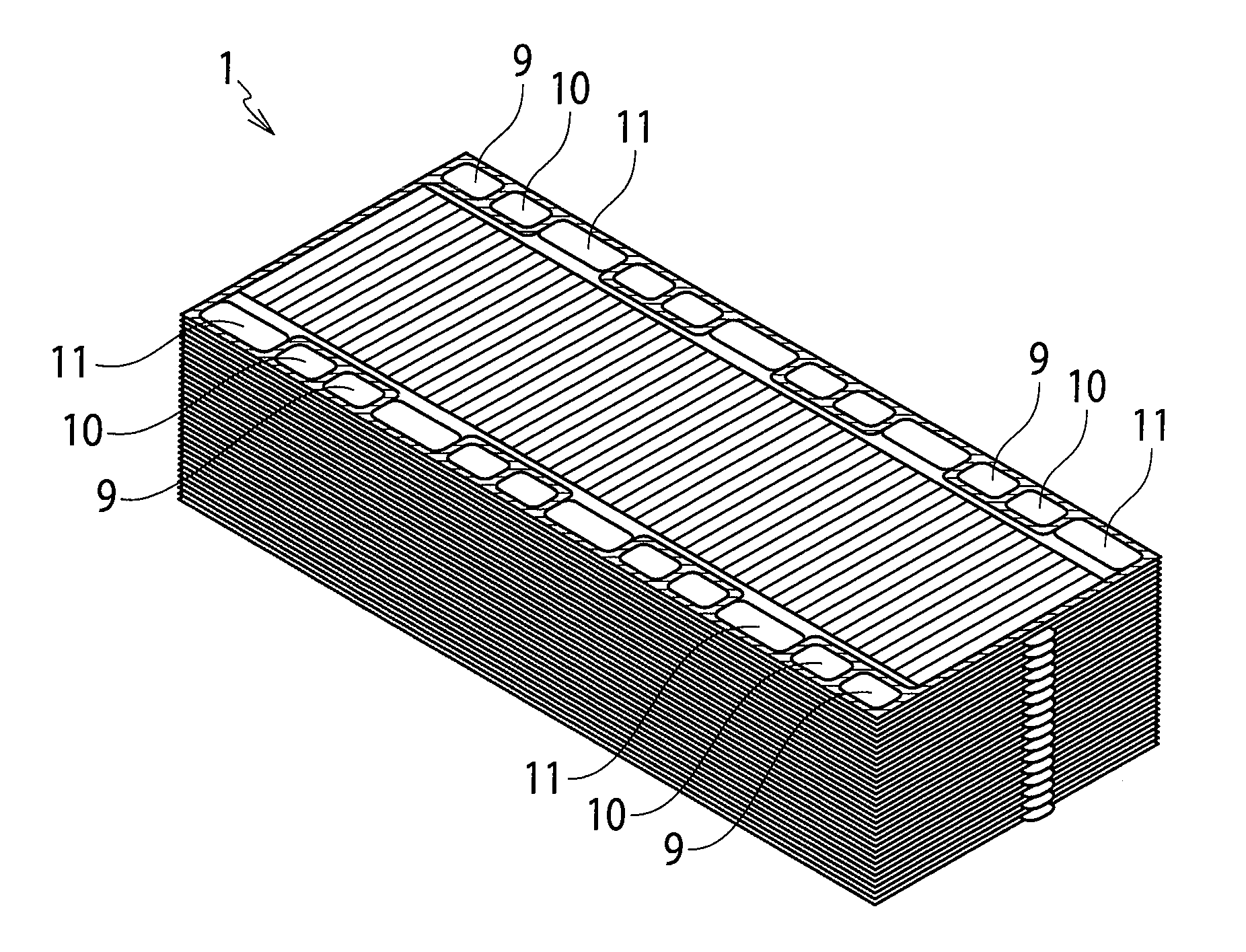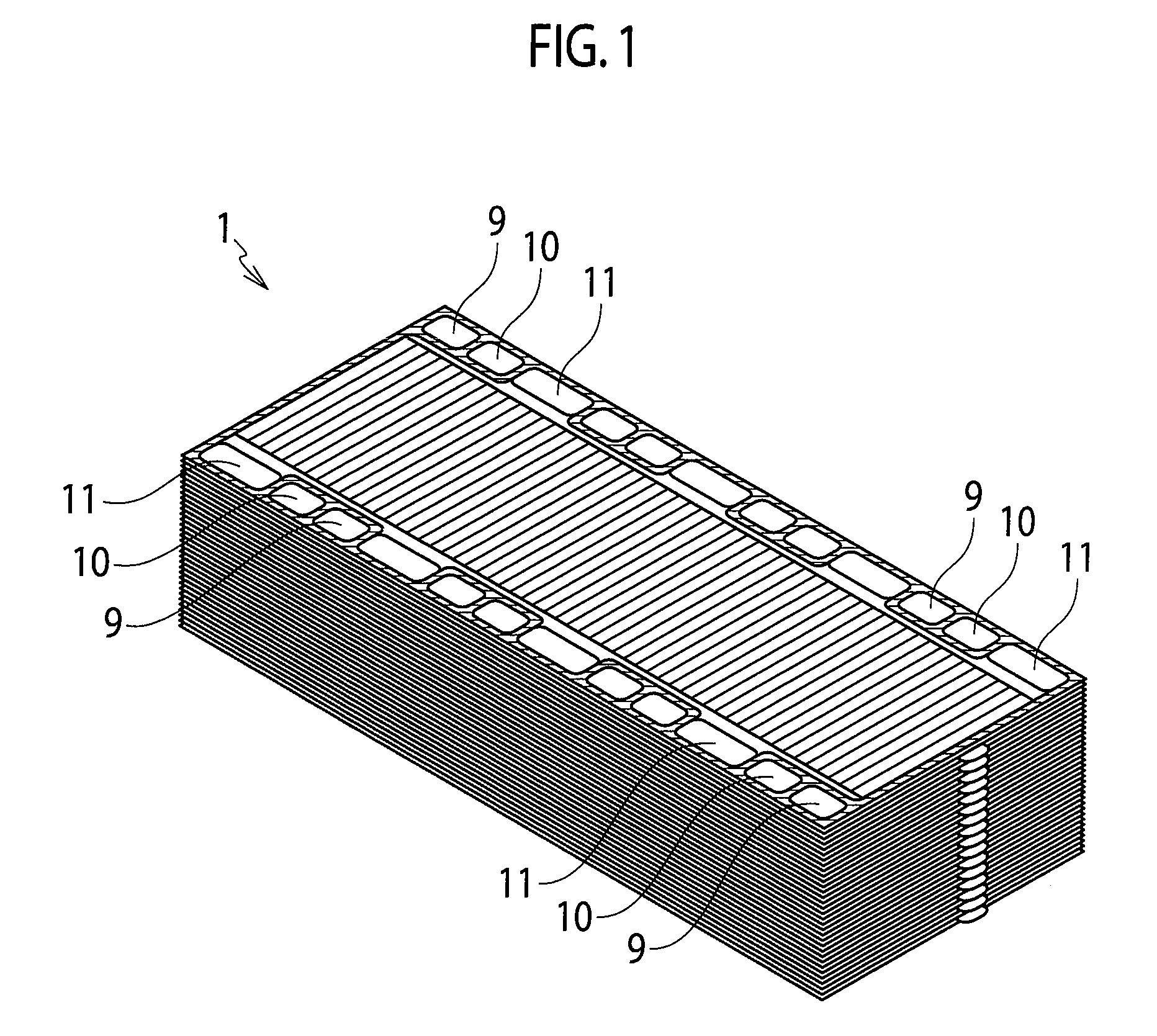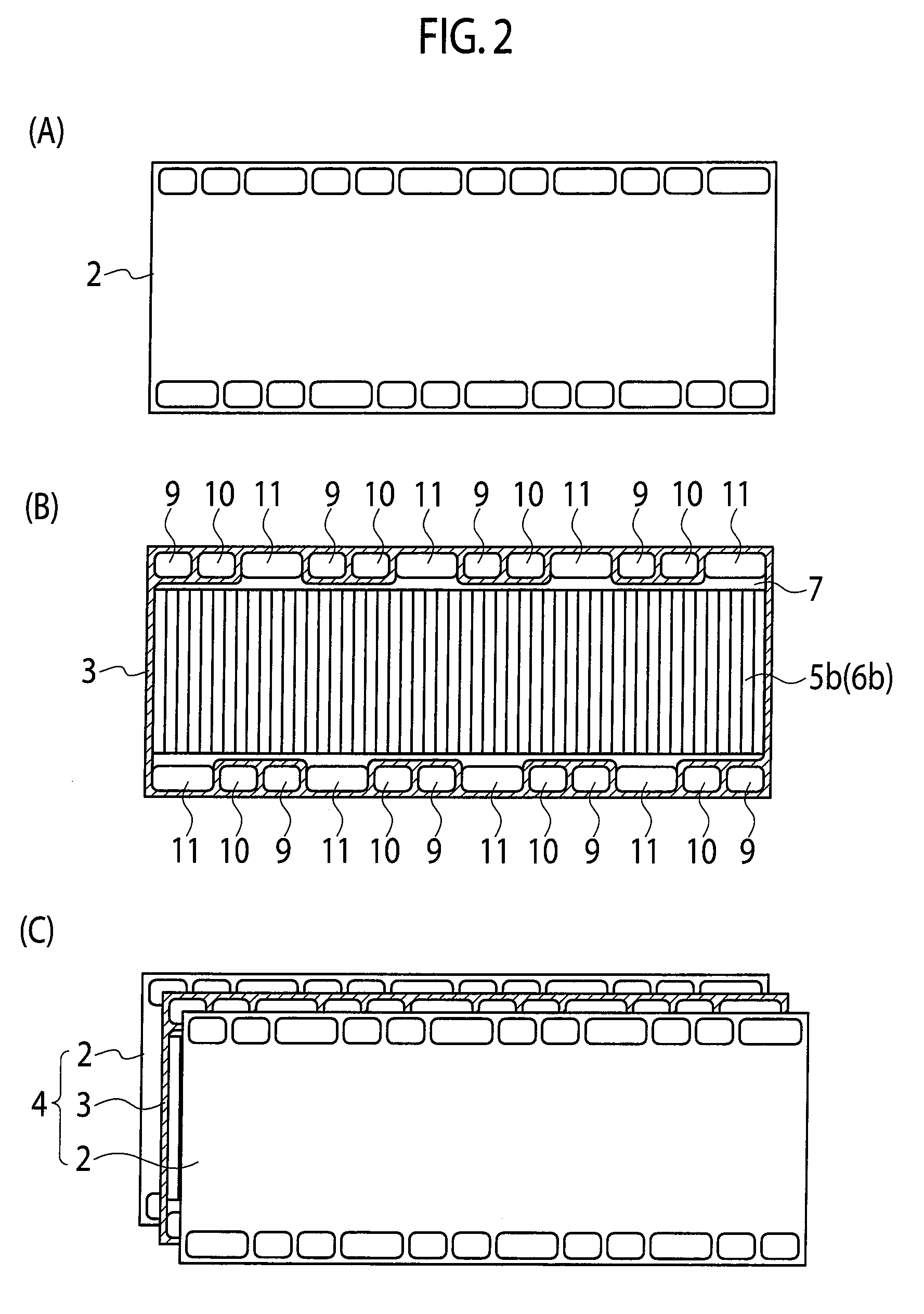Fuel cell and vehicle including the fuel cell
a fuel cell and vehicle technology, applied in the field of fuel cells and vehicles including fuel cells, can solve the problems of predetermined pressure loss, excessive pressure loss, and limitations on the miniaturization of conventional fuel cells, and achieve the effects of improving vehicle mountability, productivity and cost, and improving volumetric power density
- Summary
- Abstract
- Description
- Claims
- Application Information
AI Technical Summary
Benefits of technology
Problems solved by technology
Method used
Image
Examples
example 1
[0088]First, 5 parts (carbon average particle diameter: approximately 3 μm) of Acetylene Black made by Denki Kagaku Kogyo Kabushiki Kaisha and 1 part of Polyflon D-1E made by Daikin Industries, Ltd. were mixed with each other, whereby ink slurry was prepared. Next, the above-described ink slurry was coated on Carbon Paper TGP-H-060 made by Toray Industries, Inc., followed by baking at 350° C., whereby a GDL having a carbon particle layer on a surface thereof was created. A thickness of the obtained GDL was 0.2 mm, and a shape of the GDL was a rectangle with a width 595 mm×a length 52 mm.
[0089]Next, catalyst layers containing platinum-supported carbon were coated on both surfaces of an electrolyte membrane (polymer electrolyte membrane Nafion 211 made by DuPont Corporation), whereby a CCM was created. A shape of the CCM was a rectangle with a width 606 mm×a length 88 mm. A shape of the catalyst layers was a width 593 mm×a length 50 mm. That is to say, an aspect ratio R of the catalys...
example 2
[0096]First, the membrane electrode assembly of Example 1 was cut out to a size of a width 50 mm×a length 50 mm. Moreover, by using the separators of Example 1, the flow rates of the fuel gas and the oxidant gas were also set at a 50 (mm) / 593 (mm) time that of Example 1. In such a way, the sub-scale fuel cell (aspect ratio R=1) of Example 2 was created.
example 3
[0102]Evaluation of power generation in Example 3 was performed by using the fuel cell of Example 2 and setting operation conditions as follows. Specifically, the stoichiometric ratio was set at 1.6 (anode) and 1.5 (cathode), inlet relative humidity was set at non-humidification (anode) and 20% RH (cathode), and an operation pressure was set at 200 kPa (absolute pressure). Moreover, thicknesses of the Carbon Paper serving as the gas diffusion layers and of the electrolyte membrane were set at 80 μm and 15 μm, respectively. The power generation characteristics were evaluated by a similar method to that of Example 2 other than the above.
[0103]Note that, when the Carbon Paper with a thickness of 80 μm was used in the fuel cell of Comparative example 1, since the channel width was wide (channel width: 1 mm) therein, the Carbon Paper was broken at a rib edge, the electrolyte membrane was damaged, and a short circuit occurred. As opposed to this, in the fuel cell of Example 3, such a shor...
PUM
| Property | Measurement | Unit |
|---|---|---|
| thickness | aaaaa | aaaaa |
| height | aaaaa | aaaaa |
| height | aaaaa | aaaaa |
Abstract
Description
Claims
Application Information
 Login to View More
Login to View More - R&D
- Intellectual Property
- Life Sciences
- Materials
- Tech Scout
- Unparalleled Data Quality
- Higher Quality Content
- 60% Fewer Hallucinations
Browse by: Latest US Patents, China's latest patents, Technical Efficacy Thesaurus, Application Domain, Technology Topic, Popular Technical Reports.
© 2025 PatSnap. All rights reserved.Legal|Privacy policy|Modern Slavery Act Transparency Statement|Sitemap|About US| Contact US: help@patsnap.com



